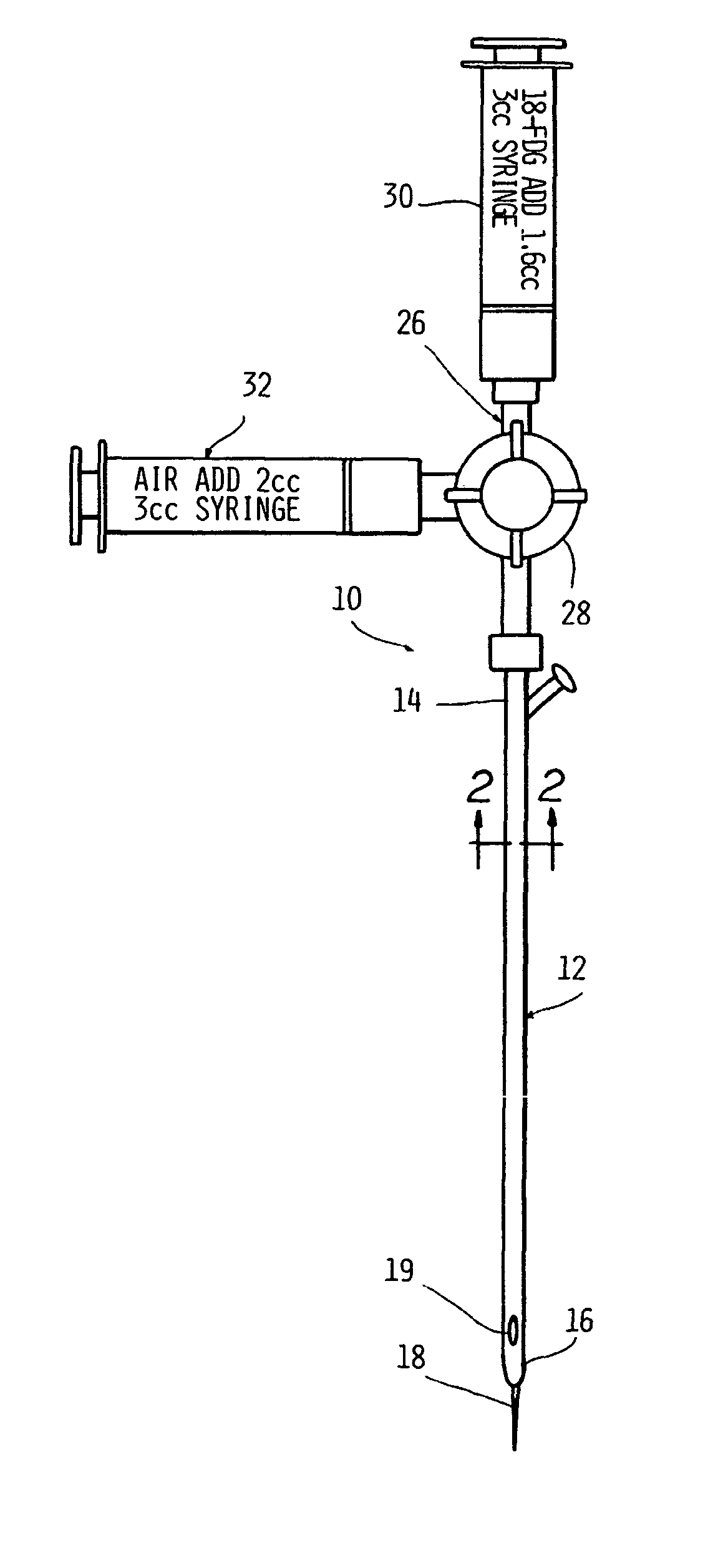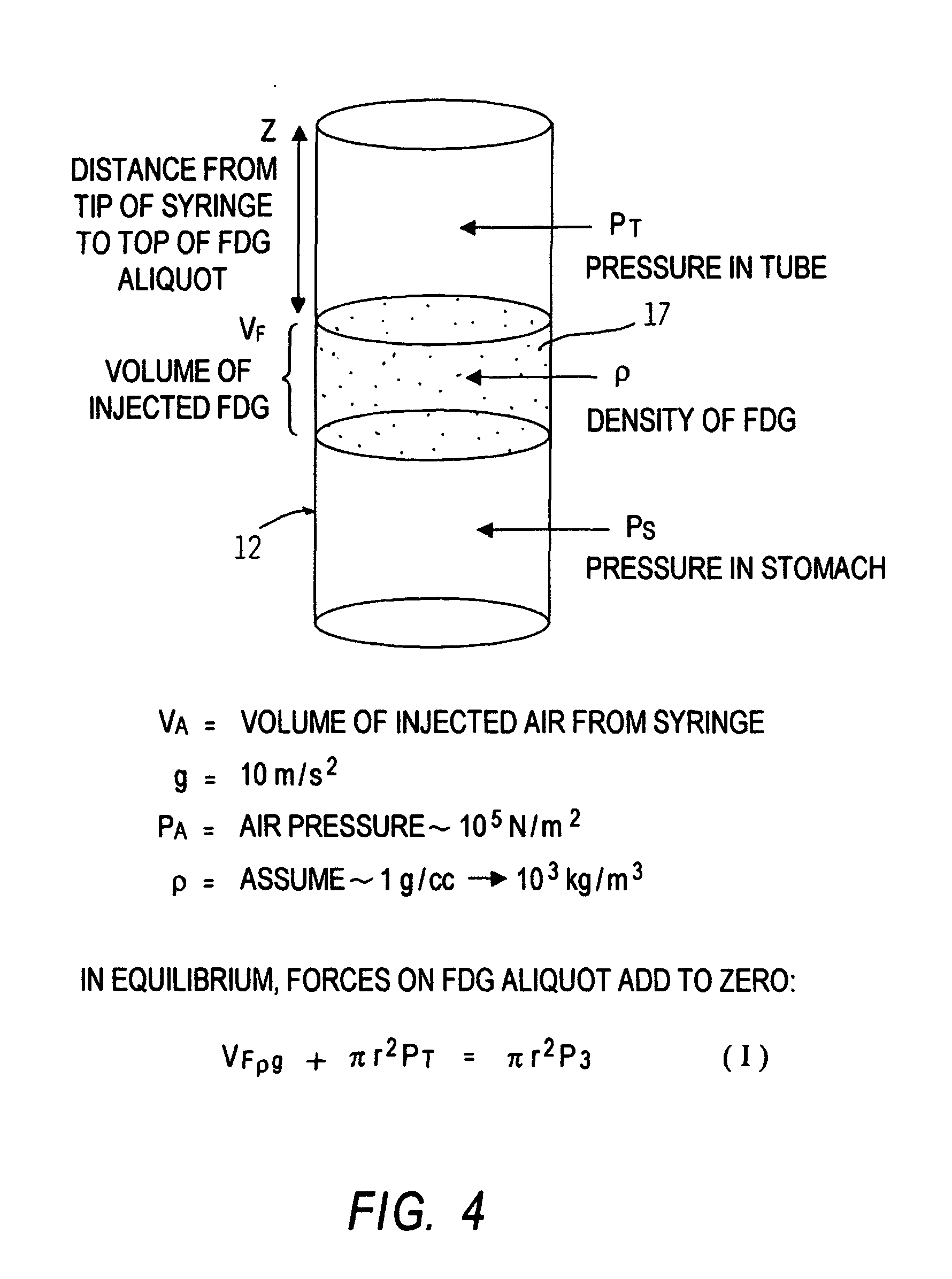Internal marker device for identification of biological substances
- Summary
- Abstract
- Description
- Claims
- Application Information
AI Technical Summary
Benefits of technology
Problems solved by technology
Method used
Image
Examples
example i
[0098] Studies were conducted in order to determine the potential uptake by a surrounding substance of imaging materials contained in the device of the present invention. A 10-French tube having a length of 109 cm, composed of polyurethane (TECOTHANE), was charged with a 2% hypaque saline solution. X-ray studies of the device thus prepared demonstrated fluid placement without air pockets in the fluid column. A copy of this x-ray is presented in FIG. 6.
[0099] This study indicated that an introduced solution would remain in a single volume in an elongated tube without intervening air bubbles or the like.
example ii
[0100] Three devices of the present invention were prepared according to the disclosure of the present invention. The devices were each 10-French polyurethane tubes of 109 cm2. Each device was charged with 1.6 ml of 2-deoxy-2-[18F]fluoro-D-glucose in suspension prepared to have a total activity of approximately 44.6 microcuries to yield an apparent tracer activity on PET greater than that of normal soft tissue.
[0101] Each device so prepared was fastened at its proximal end and allowed to suspend with a distal end in an Erlenmeyer flask filled with water. Each flask was mechanically moved to simulate body activity. At the end of one hour, radioactive counts of the flask water were taken and did not exceed total background radiation. From this data, it can be concluded that radioactive infiltration into the surrounding water from the device of the present invention did not occur. It could be concluded from these results that material introduced into the device of the present inventio...
example iii
[0102] In order to simulate use, the device of the present invention on a test subject, the procedure was simulated in a phantom. A 109 cm 10-French enteral feeding tube was positioned at a location simulating a subject's esophagus. The associated stylet was removed from the tube and an AP chest x-ray of the simulation dummy (phantom) was taken to confirm proper placement of the tube.
[0103] After proper placement was ascertained, the access port cap was cut off and replaced with a suitable three-way stopcock with a male luer lock. The existing flushing port of the tube was capped. Two 3-ml luer-lock syringes were affixed to the two open ports of the stopcock. One syringe was charged with 1.6 ml of FDG prepared in the manner described in Example II. The other syringe was charged with 2 ml of air.
[0104] In order to charge the lumen, the stopcock handle was turned to block flow from the air-filled syringe and to open a channel to the FDG-filled syringe. Injection of 1.6 cubic centime...
PUM
 Login to View More
Login to View More Abstract
Description
Claims
Application Information
 Login to View More
Login to View More - R&D
- Intellectual Property
- Life Sciences
- Materials
- Tech Scout
- Unparalleled Data Quality
- Higher Quality Content
- 60% Fewer Hallucinations
Browse by: Latest US Patents, China's latest patents, Technical Efficacy Thesaurus, Application Domain, Technology Topic, Popular Technical Reports.
© 2025 PatSnap. All rights reserved.Legal|Privacy policy|Modern Slavery Act Transparency Statement|Sitemap|About US| Contact US: help@patsnap.com



